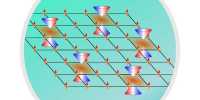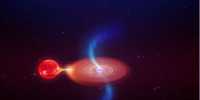Researchers have created a circuit that can generate the high-quality microwave signals needed to control quantum computers while operating at temperatures close to absolute zero. This is an important step toward bringing the control system closer to the quantum processor, which may allow for a significant increase in the number of qubits in the processor.
Researchers have been focusing on optical systems in the race to develop practical quantum computers. For example, MIT researchers recently made an important step toward quantum computing by developing a prototype chip that can trap ions in an electric field and direct laser light towards each of them using built-in optics. But what if there was a different way to build quantum computers that did not rely on optical systems?
Researchers in Finland have created a circuit that can generate the high-quality microwave signals needed to control quantum computers while operating at temperatures close to absolute zero.
The mechanism used to control the qubits in quantum processors is one of the factors limiting the size of quantum computers. This is typically accomplished with a series of microwave pulses, and because quantum processors operate at temperatures close to absolute zero, the control pulses are typically brought into the cooled environment from room temperature via broadband cables.
Our device generates one hundred times more power than previous versions, which is sufficient to control qubits and perform quantum logic operations. It generates a very precise sine wave that oscillates at a rate of over a billion times per second.
Mikko Möttönen
The number of cables required grows in direct proportion to the number of qubits. This limits the potential size of a quantum processor because the refrigerators cooling the qubits would have to grow in size to accommodate more and more cables while also working harder to cool them down a losing proposition in the end.
A key component of the solution to this conundrum has now been developed by a research consortium led by Aalto University and the VTT Technical Research Center of Finland. ‘We built a precise microwave source that operates at the same extremely low temperature as quantum processors, around -273 degrees,’ says Mikko Möttönen, Professor at Aalto University and VTT Technical Research Center of Finland, who led the team.
The new microwave source is a device that can be integrated with a quantum processor on a chip. It is less than a millimeter in size and could eliminate the need for high-frequency control cables to connect different temperatures. With this low-power, low-temperature microwave source, smaller cryostats may be used while increasing the number of qubits in a processor.

‘Our device generates one hundred times more power than previous versions, which is sufficient to control qubits and perform quantum logic operations,’ Möttönen says. ‘It generates a very precise sine wave that oscillates at a rate of over a billion times per second.’ As a result, errors in microwave-source qubits are extremely rare, which is critical when performing precise quantum logic operations.’
A continuous-wave microwave source, such as the one produced by this device, cannot, however, be used to control qubits as is. The microwaves must first be shaped into pulses. The team is currently working on methods to quickly turn on and off the microwave source.
An efficient, low-noise, low-temperature microwave source, even without a switching solution to generate pulses, could be useful in a variety of quantum technologies, such as quantum sensors. ‘Aside from quantum computers and sensors, the microwave source can serve as a clock for other electronic devices.’ ‘It can keep different devices in sync, allowing them to induce operations for several different qubits at the desired instant of time,’ Möttönen explains.
Since the discovery of low-temperature superconductors, there has been an ongoing effort to achieve superconductivity at room temperatures while minimizing cooling costs. Hydrogen-containing crystalline materials have shown promise in this regard. Now, a global team of researchers has used simulations to predict new crystal structures containing hydrogen atoms as potential high-temperature superconductors, potentially paving the way for energy-efficient technologies with lossless power transmission.
The team chilled a microwave resonator to nearly absolute zero temperature for the study, which was published in the journal Nature Communications. This state, known as a quantum vacuum, is similar to complete darkness, but it contains fluctuations that can bring photons into and out of existence, albeit for a very short time.
The researchers discovered a “magic connection” between each of the photons after converting these flickering photons into real ones.
“All of this points to the possibility of using different frequencies for quantum computing.” “The photons at different frequencies will function similarly to registers in traditional computers, and logical gate operations can be performed between them,” said Dr. Sorin Paraoanu, senior university lecturer and one of the study’s co-authors.
















